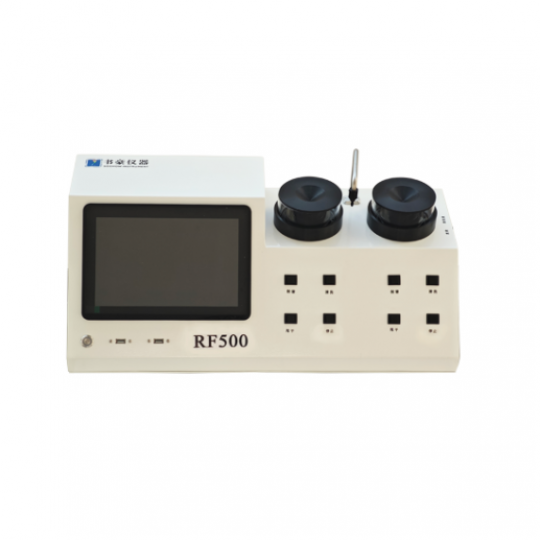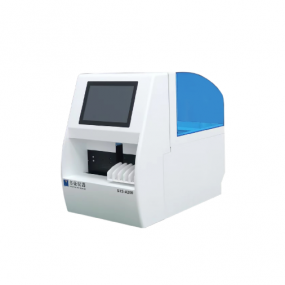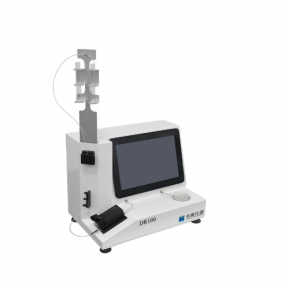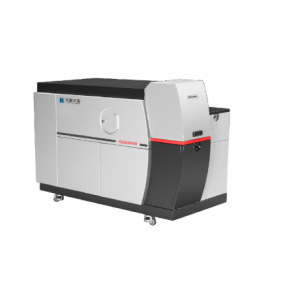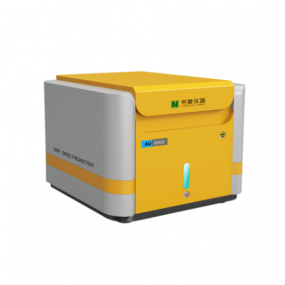RF500 Rotary Particle Depositor
-
155
-
0765 259 545
RF500 Rotary Particle Depositor
Model: RF500
The RF500 dual rotary ferrograph is a new type of equipment operating condition oil analysis instrument, which meets the requirements of NB/T 51068-2017 "Iron spectrum analysis method for gear oil in coal mine oil equipment (rotary ferrograph method)" and Q-SH.J 014-2010 "Technical standard for iron spectrum analysis of coal mine equipment oil".
Model: RF500
The RF500 dual rotary ferrograph is a new type of equipment operating condition oil analysis instrument, which meets the requirements of NB/T 51068-2017 "Iron spectrum analysis method for gear oil in coal mine oil equipment (rotary ferrograph method)" and Q-SH.J 014-2010 "Technical standard for iron spectrum analysis of coal mine equipment oil".
RF500 Rotary Particle Depositor
Model: RF500
Model: RF500
The RF500 dual rotary ferrograph is a new type of equipment operating condition oil analysis instrument, which meets the requirements of NB/T 51068-2017 "Iron spectrum analysis method for gear oil in coal mine oil equipment (rotary ferrograph method)" and Q-SH.J 014-2010 "Technical standard for iron spectrum analysis of coal mine equipment oil". It uses a high field gradient magnetic field to deposit ferromagnetic and paramagnetic particles generated by wear in equipment lubricating oil (or other liquid media) on a glass substrate (spectrum), and arranges them into a ferromagnetic line map according to the magnetic field force distribution. The dual rotating ferrograph adopts a dual magnetic head design, which greatly improves the spectral efficiency and tolerance to various contaminated oil samples. It is particularly suitable for qualitative and quantitative ferrographic analysis of severely contaminated oil. Then, using a ferrographic microscope, the physical characteristics such as size, shape, size, color, and surface texture of the abrasive particles can be observed, and the number of abrasive particles can be counted to identify the wear type and obtain the wear status of the equipment.
Application Fields
The RF500 dual rotating iron spectrometer can be used for:
1. Analyze the operating conditions of diagnostic equipment and predict mechanical equipment failures caused by wear and tear;
2. Assess the performance of lubricating oil and determine whether its use is normal;
3. Develop running in specifications for new machines to improve the reliability and performance of equipment operation;
4. Collect the root cause parameters of hidden faults in equipment operation for the study of friction and wear mechanisms;
5. To achieve the goal of reducing equipment failure rates and extending equipment lifespan
1. The magnetic field gradient distribution in the abrasive deposition zone is 100-1000 Gs, and the highest magnetic induction intensity at the working point is ≥ 600 Gs;
2. Large area of magnetic head particle deposition area, inner diameter of magnetic head inner ring 11.5 ± 0.5mm, width 0.5 ± 0.2mm; The inner diameter of the magnetic head coil is 19.0 ± 0.5mm, and the width is 0.5 ± 0.2mm; Inner diameter of magnetic head outer ring (29.0 ± 0.5mm, width 0.5 ± 0.2mm);
3. The magnetic head has three working speeds, with a default speed of 75rpm/min for the spectrum setting, 150rpm/min for the cleaning setting, and 200rpm/min for the spin drying setting. Each speed can be adjusted within a certain range;
4. Measurement range: 0 μ m to 3000 μ m;
5. The radial runout of the magnetic head during operation is less than ± 100 μ m, and the total runout of the end face is less than ± 100 μ m;
6. Spectral glass substrate size: 55 * 55 * 0.17 (mm);
7. The abrasive particles are uniformly deposited along the deposition ring with equal probability on the spectral plane, and there is basically no overlap phenomenon. The effective sample area deposited with equal probability is ≥ 47mm2, and the sample area deposited with equal probability in the inner ring is ≥ 9mm2;
8. Reproducibility error: The mean error of qualitative iron spectra in 8 microscope fields is less than 10%, and the mean error of quantitative iron spectra in 4 microscope fields is less than 15%;
9. Size: 700mm * 280mm * 240mm;
10. Weight: Approximately 14kg;
11. Power supply: 220 ± 10% VAC, 50Hz, equipped with 24V 6A power adapter;
12. Power consumption:< 150W.
Product Similar
STS-A200 Specific Protein Analyzer
Environmental testing requirements: Meet the requirements of Group I of Climate Environmental Testing, Group I of Mechanical Environmental Testing in GB/T 14710-2009, and Table 3 of this technical requirement. The transportation test and power supply voltage adaptability test of the analyzer should comply with the requirements of Chapter 4 and Chapter 5 of GB/T 14710-2009, respectively.
Safety requirements: Meet the requirements of applicable clauses in GB 4793.1-2007, GB 4793.9-2013, and YY0648-2008.
Electromagnetic compatibility requirements: comply with the requirements of applicable clauses in GB/T18268.1-2010 and GB/T18268.26-2010.
0765 259 545
DR100 Direct Reading Ferrograph
Model: DR100
(1) Can quickly measure the content of all ferromagnetic wear particles in oil, and provide quick quantitative analysis for ferromagnetic particles in oil.
(2) By utilizing equipment to detect changes in wear intensity at an early stage of wear, and adjusting the sampling monitoring time density, trend analysis can be conducted on the instrument and equipment to further inspect and replace the problem, avoiding serious losses.
0765 259 545
Glow spectrometer
Model: GDS8000 GD OES
Complies with national standards: GB/T19502-2004 "General Principles for Surface Chemical Analysis - Glow Discharge Atomic Emission Spectroscopy", GB/T22368-2008 "Determination of Multielement Content in Low Alloy Steel - Glow Discharge Atomic Emission Spectroscopy (Conventional Method)", and GB/T22462-2008 "Quantitative Determination of Element Depth Distribution in Nanoscale and Submicroscale Thin Films on Steel Surface - Glow Discharge Atomic Emission Spectroscopy".
0765 259 545
AU8000 Precious Metal Analyzer
Model: AU8000
SooHow - China
Instrument configuration
1. Si-PIN semiconductor detector, digital multi-channel analysis system, X-ray tube, high and low voltage power supply;
2. Collimator filter system, sample observation system, electronic control system, computer and printer.
This product meets the requirements of the national standard GB/T18043-2013 for instrument resolution. AU8000 uses Si-Pin semiconductor detectors, which are far superior to proportional counting detectors; it accurately analyzes the content of gold, silver, platinum, palladium, copper, zinc and nickel in gold, platinum and K-gold jewelry.




 SCITEK - China
SCITEK - China EBP - China
EBP - China SOOHOW - China
SOOHOW - China ZD Instrument - China
ZD Instrument - China Yante
Yante JJ-Test
JJ-Test Labthink
Labthink Hunterlab
Hunterlab EURPING - China
EURPING - China Wisdom - China
Wisdom - China ZYLAB - CHINA
ZYLAB - CHINA ERKAYA -
ERKAYA - Novotest - Ukraine
Novotest - Ukraine Moderner - China
Moderner - China GBPI - China
GBPI - China Milkotester - Bulgaria
Milkotester - Bulgaria LAMY RHEOLOGY
LAMY RHEOLOGY  Emco
Emco GESTER - China
GESTER - China GonDo - Taiwan
GonDo - Taiwan Agri-instrument - China
Agri-instrument - China CHN - China
CHN - China PNTOO - China
PNTOO - China TESTER SANGYO
TESTER SANGYO FRU - China
FRU - China Rucca - China
Rucca - China HSIANG TAI - CHINA
HSIANG TAI - CHINA FYI - China
FYI - China Boxun - China
Boxun - China Linshang - China
Linshang - China Hanon - China
Hanon - China PCE - UK
PCE - UK  Biuged
Biuged IRIS
IRIS ACEY - China
ACEY - China 3NH
3NH XS Instruments
XS Instruments Doser
Doser OPTIKA - ITALY
OPTIKA - ITALY Great Safe
Great Safe Kett
Kett Mitutoyo
Mitutoyo Cometech - Taiwan
Cometech - Taiwan Veego
Veego COPLEY SCIENTIFIC
COPLEY SCIENTIFIC  Exotek
Exotek Total Meter
Total Meter PNShar
PNShar Radwag
Radwag SH Scientific
SH Scientific X-Rite
X-Rite Metrotec
Metrotec Hach
Hach Hanna
Hanna Endecotts
Endecotts TRINAMIX
TRINAMIX HMKTEST
HMKTEST PackTest Machines Inc
PackTest Machines Inc CHAO QIANG - CHINA
CHAO QIANG - CHINA Sartorius - Germany
Sartorius - Germany SIKA - Germany
SIKA - Germany Ohaus
Ohaus SUN SCIENTIFIC
SUN SCIENTIFIC Aczet
Aczet Trace2o - UK
Trace2o - UK Glas -Col - USA
Glas -Col - USA Beijing
Beijing ATAGO – JAPAN
ATAGO – JAPAN TECHLAB SYSTEMS
TECHLAB SYSTEMS ESI
ESI RJS - USA
RJS - USA Kruss
Kruss Lumex Instruments
Lumex Instruments ELECTROLAB
ELECTROLAB  Haida
Haida Horiba
Horiba Konica
Konica Datacolor
Datacolor CRYSTE
CRYSTE Uni-T
Uni-T Oxford Instruments
Oxford Instruments Fuzhou Furi - China
Fuzhou Furi - China Alpha MOS
Alpha MOS  Drick
Drick FPInnovations - Canada
FPInnovations - Canada Memmert
Memmert 3M
3M Advantec
Advantec Newstar
Newstar ANTON PAAR
ANTON PAAR